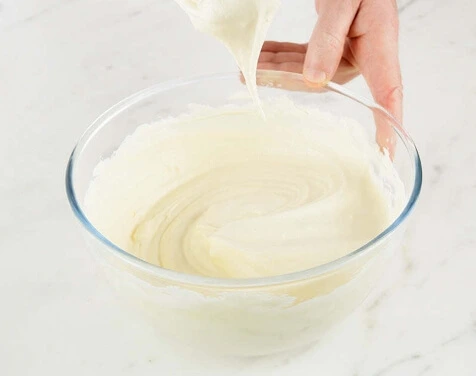Few desserts capture the imagination quite like tiramisu. With its name translating to “pick me up” in Italian, this beloved treat is more than just a finale to a meal—it’s a celebration of contrasts, textures, and traditions that have endured through generations. From the intimate cafés of Treviso to the fine dining tables of Paris, New York, and Tokyo, tiramisu has secured its place as a global icon of Italian indulgence.
What makes tiramisu so enchanting is its delicate balance between richness and lightness. It is a dessert that speaks in layers—each one unfolding a new sensation, a different temperature, a contrasting mouthfeel. The soft and velvety creaminess, the slight resistance of sponge soaked in deep, dark notes, and the subtle bitterness that lingers on the palate—tiramisu is not eaten, it is experienced.
Its origins are often debated, wrapped in romantic tales and culinary legends. Some attribute its invention to the Veneto region in the late 20th century, while others trace it to the kitchens of Piedmont or Tuscany. Regardless of its birthplace, tiramisu has always been associated with comfort, sophistication, and a kind of effortless charm that only Italian desserts seem to master.
Beyond the plate, tiramisu is a symbol of hospitality and togetherness. In Italian homes, it is lovingly assembled for special occasions, birthdays, and Sunday lunches. In restaurants, it is the dessert that draws sighs of contentment and murmurs of delight. It’s elegant yet approachable, luxurious yet nostalgic.
Today, tiramisu has inspired countless variations around the world—infused with seasonal fruits, reimagined in frozen forms, or transformed into towering cakes and delicate petits fours. Yet, despite its adaptability, the soul of tiramisu remains unchanged: it is a dessert that brings joy, comfort, and a touch of la dolce vita to every table it graces.
Tiramisu is not just a recipe—it’s a story. A sweet story of Italian culture, shared moments, and timeless pleasure.
For 8 servings
Preparation time: 1 hour
Chilling time: 1 hour
Baking time: 8 minutes
Storage: Up to 3 days in the refrigerator
Equipment needed
- Whisk
- Stand mixer
- Cooking thermometer
- Piping bag (no nozzle)
- 8 individual serving glasses or verrines
- Round cutter (same diameter as the verrines)
- Fine mesh sieve
Tiramisu for 8 Servings
Homemade Ladyfinger Sponge (150 g required)
Ingredients:
- 60 g egg yolks (about 3)
- 75 g egg whites (about 2–3)
- 60 g granulated sugar
- 60 g all-purpose flour
- A pinch of salt
- Icing sugar (for dusting)
Method:
- Preheat the oven to 180°C (356°F), fan off.
- Whisk the egg whites with a pinch of salt until soft peaks form. Gradually add half the sugar and continue to whisk until stiff and glossy.
- In another bowl, whisk the egg yolks with the remaining sugar until pale and thick.
- Gently fold the whipped whites into the yolks in two additions.
- Sift the flour over the mixture and fold it in carefully with a spatula.
- Transfer to a piping bag and pipe lines or disks depending on your mold size.
- Dust with icing sugar and bake for 8–10 minutes until lightly golden and just firm.
- Cool on a wire rack. Cut as needed to fit your verrines.
Coffee Soaking Syrup
- 100 g strong brewed coffee (hot)
- 50 g sugar
- 5 g dark rum
- 2.5 g coffee liqueur
Method:
- Combine the coffee and sugar while still hot. Stir until the sugar dissolves.
- Add the rum and coffee liqueur.
- Let cool completely before use.
Tiramisu Cream
- 40 g egg yolks (about 2)
- 70 g sugar (to be cooked to 110°C / 230°F)
- 4 g sheet gelatin (softened in cold water and squeezed)
- 125 g mascarpone (room temperature)
- 25 g amaretto
- 150 g heavy cream (35% fat), very cold
Method:
- Place the egg yolks in the bowl of a stand mixer.
- Cook the sugar with a splash of water until it reaches 110°C (230°F).
- Immediately pour the hot syrup in a thin stream over the yolks while whisking on high speed. Continue whisking until cooled and pale.
- Melt the softened gelatin gently and incorporate into the yolk mixture.
- Add the mascarpone and amaretto. Mix until smooth.
- Whip the cold cream to soft peaks and gently fold it into the mascarpone mixture in two additions.
- Transfer to a piping bag (no nozzle needed).
Assembly and Finishing
- Using an emporte-pièce (round cutter), trim the ladyfinger sponge to fit the verrines.
- Dip each sponge round briefly into the coffee syrup and place one at the bottom of each verrine.
- Pipe a layer of tiramisu cream.
- Add another soaked biscuit layer and a final layer of cream, smoothing the top.
- Chill for at least 1 hour in the refrigerator.
- Before serving, dust the surface generously with unsweetened cocoa powder (50 g total).
Step-by-Step Preparation
1. Prepare the Ladyfinger Sponge
- Make the ladyfinger sponge according to the recipe and spread it evenly onto a baking tray lined with parchment paper.
- Bake at 180°C (356°F) for about 8 minutes, or until lightly golden and springy to the touch.
- Allow to cool completely.
- Using a round cutter the same diameter as your verrines, cut out 16 disks of sponge. You’ll need 2 disks per verrine.

2. Make the Coffee Soaking Syrup
- In a small saucepan, combine the brewed coffee, sugar, rum, and coffee liqueur.
- Heat gently, stirring until the sugar is completely dissolved.
- Remove from heat and let the syrup cool to room temperature.
- Dip each sponge disk quickly into the cooled syrup to soak. Be careful not to oversaturate them—they should remain intact.
- Let the soaked disks drain briefly on a wire rack.

3. Prepare the Pâte à Bombe
A pâte à bombe is a base made by whipping egg yolks with hot sugar syrup. It gives the tiramisu cream its airy, stable texture.
- Place the egg yolks in the bowl of a stand mixer fitted with the whisk attachment.
- In a small saucepan, heat the sugar with just enough water to moisten it. Cook until it reaches 110°C (230°F) on a thermometer.
- Immediately pour the hot syrup in a thin, steady stream over the yolks while whisking at medium speed.
- Increase the speed and whip until the mixture cools down completely. This can take several minutes. The final result should be pale, airy, and mousse-like.
- In the meantime, melt the rehydrated and squeezed gelatin to around 40°C (104°F) and incorporate it into the pâte à bombe once it has cooled to around 20°C (68°F).

4. Whip the Cream and Mascarpone
- In a separate large mixing bowl, whisk the cold heavy cream and mascarpone together until they reach soft peaks. Be careful not to overwhip.
- Add the amaretto and mix just until combined.

5. Combine and Finish the Cream
- Gently fold the pâte à bombe into the whipped cream-mascarpone mixture. Begin with one-third of the cream to lighten the mixture, then fold in the rest carefully using a whisk or spatula.
- The cream should be smooth, light, and well aerated.
- Transfer the cream into a piping bag without a nozzle. It is now ready for assembly.
Conclusion: The Art of Tiramisu
Tiramisu is more than a dessert—it is an expression of balance, precision, and indulgence. From the softness of the sponge to the silkiness of the cream, each element plays its part in creating a composition that is both comforting and refined. Every step, though technical, contributes to something deeply emotional: a bite that evokes warmth, nostalgia, and pure pleasure.
Preparing tiramisu in verrines, with carefully layered biscuit soaked in aromatic coffee and a delicately crafted mascarpone cream, brings a modern elegance to a traditional classic. It’s an opportunity to showcase finesse: in the cooking of the sugar, in the structure of the pâte à bombe, and in the lightness of the final texture. These are the techniques of the pâtissier—demanding, yes, but deeply rewarding.
What makes tiramisu truly timeless is its ability to adapt without ever losing its soul. It welcomes subtle variations—different spirits, flavored creams, or shaped presentations—while always returning to its roots: a balance of bitter, sweet, creamy, and airy. It is both accessible and elevated, capable of impressing at dinner parties or comforting on a quiet evening.
When well-executed, tiramisu becomes a signature—one that speaks of your care for detail, your respect for tradition, and your love of sharing. It invites slow savouring. It invites silence around the table. And most importantly, it lingers—not only on the palate, but in the memory.
Whether you’re serving it for guests or treating yourself, this tiramisu will never go unnoticed. In every spoonful lies a quiet celebration of craft, culture, and the simple joy of dessert done right.
Chef’s Q&A – The Tiramisu Edition
Q: My tiramisu cream is too runny—what went wrong?
A: This often happens if the whipped cream wasn’t firm enough, or if the pâte à bombe was still warm when incorporated. Be sure the pâte à bombe has fully cooled to around 20°C before folding it in, and that your cream and mascarpone are whipped to soft, stable peaks. Also, do not skip the gelatin—it plays a key role in setting the cream.
Q: Can I prepare tiramisu the day before?
A: Absolutely! In fact, tiramisu benefits from a few hours of rest in the refrigerator—ideally between 4 and 24 hours. This allows the cream to firm up and the flavors to meld harmoniously. Just be sure to dust the cocoa powder right before serving for a clean finish.
Q: How do I cut the sponge perfectly to fit my verrines?
A: Use a round metal cutter with the exact diameter of your serving glasses. If needed, freeze the baked sponge briefly to make cleaner cuts. This avoids crumbling and ensures a tight, elegant fit at the base of each verrine.
Q: Can I replace the alcohol?
A: Of course. You can either omit it entirely or substitute with a few drops of almond extract or vanilla for flavor depth. For a child-friendly version, use decaffeinated coffee and skip the spirits altogether.
Q: How do I get a perfectly smooth top layer in the verrines?
A: Once you’ve piped the final layer of cream, tap the verrines gently on the counter to settle the surface. Then, smooth it with a small offset spatula or the back of a spoon dipped in warm water. Chill before dusting with cocoa for that flawless, professional look.

